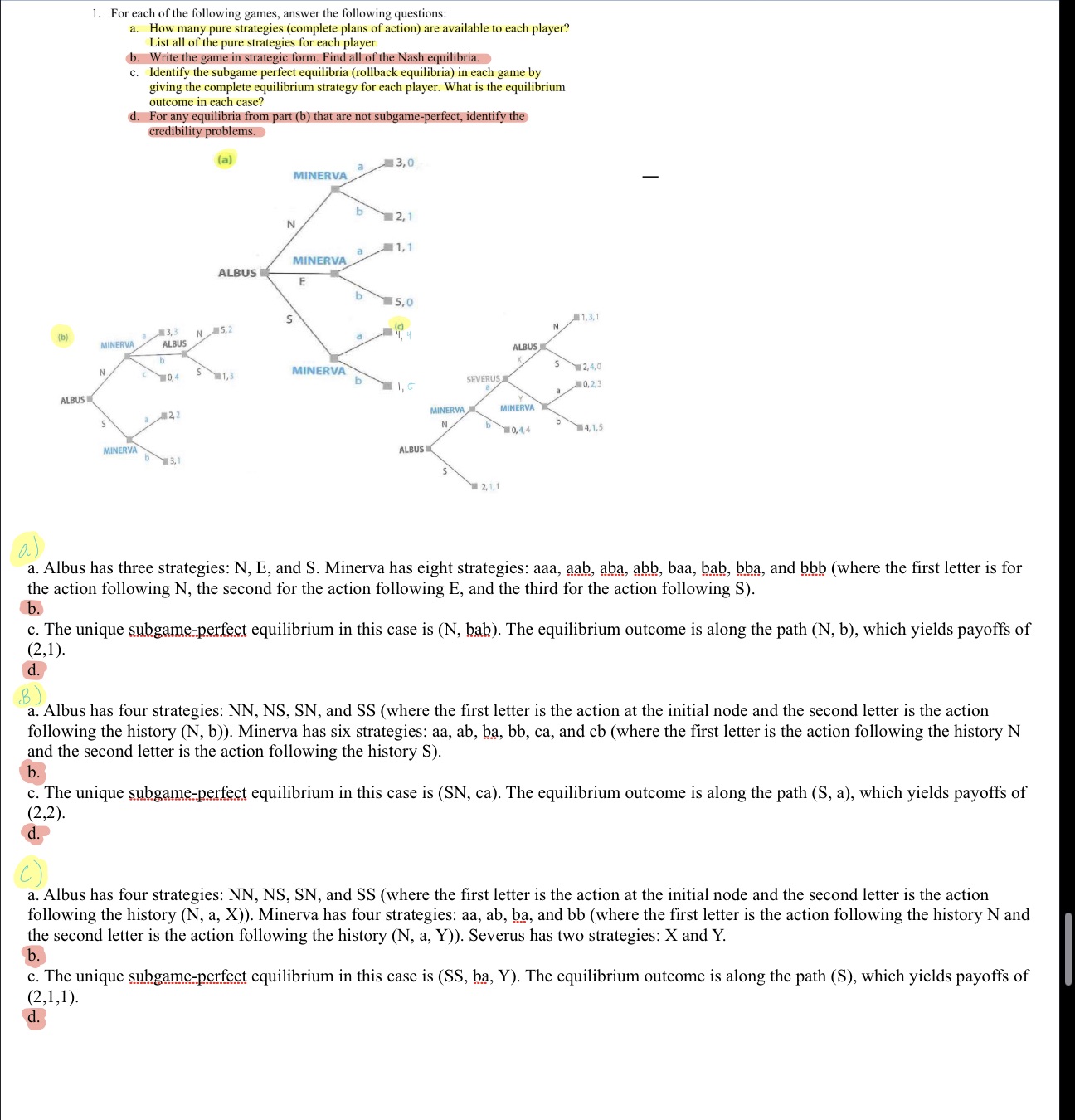Answered step by step
Verified Expert Solution
Question
1 Approved Answer
Hi, I am trying to finish up my Game Theory Problem Set and I save this one for last, and I am struggling on parts
Hi, I am trying to finish up my Game Theory Problem Set and I save this one for last, and I am struggling on parts b and d of the question. I have provided everything I've gotten for a and c and the games for a, b, and c below. Any help is appreciated

Step by Step Solution
There are 3 Steps involved in it
Step: 1

Get Instant Access to Expert-Tailored Solutions
See step-by-step solutions with expert insights and AI powered tools for academic success
Step: 2

Step: 3

Ace Your Homework with AI
Get the answers you need in no time with our AI-driven, step-by-step assistance
Get Started


